There is a lot of confusion about whether or not you can use kitchen cabinets in a bathroom. People often think that they have to buy special bathroom cabinets, but this is not the case. In fact, there are many benefits to using kitchen cabinets in a bathroom. In this article, we will answer some common questions about using kitchen cabinets in a bathroom and provide some useful tips on how to do it correctly!
Benefits of Using Kitchen Cabinets in the Bathroom
Using kitchen cabinets in the bathroom can be a great way to add a unique touch to your home. The look of this type of cabinetry is often more stylish and modern than traditional bathroom vanity styles, making them a popular choice for those looking to create an updated and contemporary space.
Not only do they add style, but there are several practical benefits as well. Kitchen cabinets tend to have larger drawers and storage capacity compared to standard bathroom vanities, which can help you keep towels, toiletries, and other items neatly organized. Additionally, because of their construction materials, kitchen cabinets typically last longer than standard vanities and can stand up better against moisture buildup from regular shower use or condensation from heated towel racks. [1]
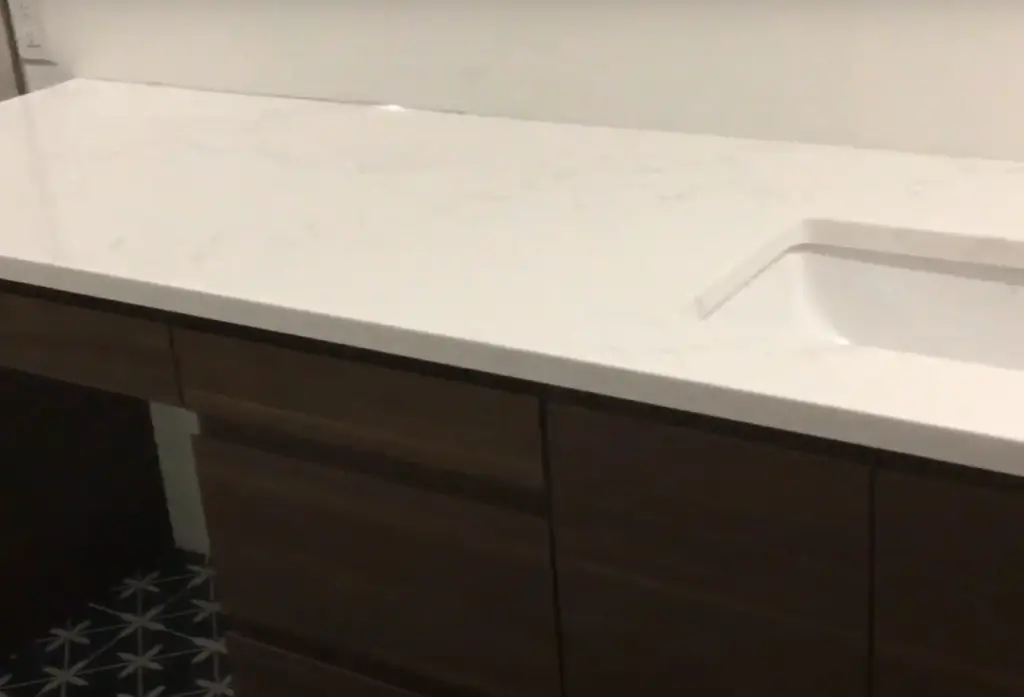
Drawbacks of Using Kitchen Cabinets in the Bathroom
While there are many benefits to using kitchen cabinets in a bathroom, there are a few drawbacks that should be considered before making the switch. The most notable issue is moisture. Bathrooms tend to have higher levels of humidity compared to the rest of your home, and this can cause problems for kitchen cabinets that are not designed with these conditions in mind. If you install kitchen cabinets in your bathroom, it’s important to make sure they’re properly sealed and protected from water damage.
Finally, there’s the issue of style. While it is possible to use kitchen cabinets in a bathroom, they may not match the overall look you’re trying to create. If you have an existing theme in your home or bathroom, it can be difficult to incorporate kitchen cabinets into the mix without making them stand out too much. [2]
For these reasons, it may be better to purchase purpose-built bathroom furniture – although this isn’t always necessary and will depend on your individual circumstances. There are plenty of options available so take some time to think carefully before committing yourself!
What Modifications Will Need to Be Made?
Before you commit to using kitchen cabinets in a bathroom, it’s important to understand that certain modifications will be necessary. For starters, the cabinets should be sealed with a high-gloss paint or sealant designed for use in wet spaces. This is essential because water can easily damage wood and other materials used in cabinetry.
You may also need to add a waterproofing material around the edges of the cabinet doors and drawers to prevent moisture from seeping into the wood grain. Additionally, if you’re planning on installing your kitchen cabinets in an area near a shower or bathtub, it’s recommended that you install them at least two feet away from any source of standing water.
Finally, you may also need to change the hardware on your kitchen cabinets. Hardware such as knobs, handles, and hinges must be resistant to rust in order to prevent any damage. Chrome is often a great choice for these fixtures because it won’t corrode when exposed to moisture.
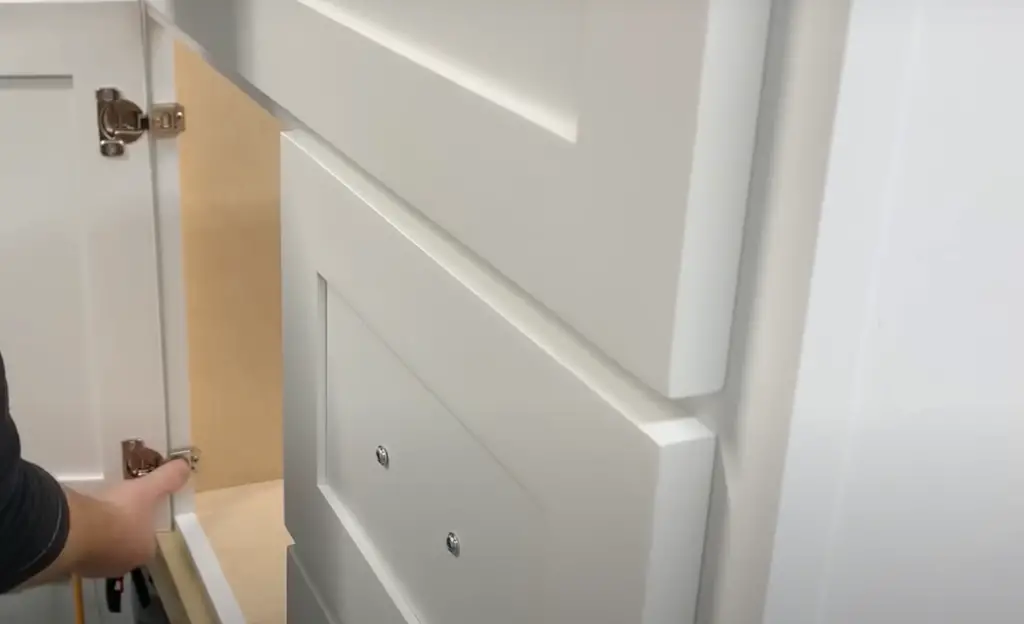
Should Your Kitchen and Bathroom Cabinets Match?
When it comes to using kitchen cabinets in a bathroom, one of the biggest questions is whether or not they should match. Ultimately, this comes down to the look you’re going for and your personal preference. If you want a more unified look throughout your home, you may choose to match your kitchen and bathroom cabinets. On the other hand, if you’d like an eclectic feel with contrasting styles, then mismatched cabinets could be just what you need. [3]
No matter which route you take, there are some important considerations when mixing different types of cabinets. Make sure that both sets of cabinets have similar sizes and shapes so that they don’t clash visually. Additionally, think about how well the cabinet finishes coordinate with each other — for example, a light-colored kitchen cabinet may not look right next to a dark-colored bathroom cabinet. Finally, consider the overall design of your space, and ensure that any mismatched pieces still complement the rest of the decor.
Ultimately, it’s up to you whether or not you choose matching or mismatching cabinets for your kitchen and bathroom.
What Style Should You Choose?
When it comes to the style of kitchen cabinets you should use in your bathroom, there are a few things to consider. If you’re going for a more traditional look, then go with wooden cabinets as they will bring warmth and character to your space. For a modern feel, opt for sleek metal or plastic cabinets. No matter which style you choose, make sure they have enough storage space and shelves so that all of your items can fit inside. Additionally, if you have limited floor space in the bathroom, wall-mounted kitchen cabinets could be an ideal solution.
Another factor to take into account is whether the material used is waterproof or resistant to humidity. You want something that won’t swell or warp when exposed to moisture. Kitchen cabinets are usually designed for dry areas like the kitchen, so it’s important that they have been made with materials that can stand up to a humid environment.
When shopping around, look for bathroom-specific cabinetry or ask your retailer if any of their kitchen cabinets are suitable for use in bathrooms instead.
Traditional Styles
If you’re looking for a traditional look, then wooden kitchen cabinets are a perfect choice. They will add warmth and character to your bathroom. However, it’s important that these cabinets are made from water-resistant materials such as solid oak or mahogany so they don’t warp over time. You can also find pre-finished wood cabinetry which is sealed with a waterproofing solution.
Modern Styles
For those who want to go for a more modern style, metal or plastic kitchen cabinets provide a sleek and contemporary look. Make sure that any stainless steel cabinet is made from high-grade steel if you plan on using it in the bathroom as lower grades will corrode quickly when exposed to moisture. Plastic cabinets, on the other hand, are lightweight and easy to install but they may not be as durable over time.
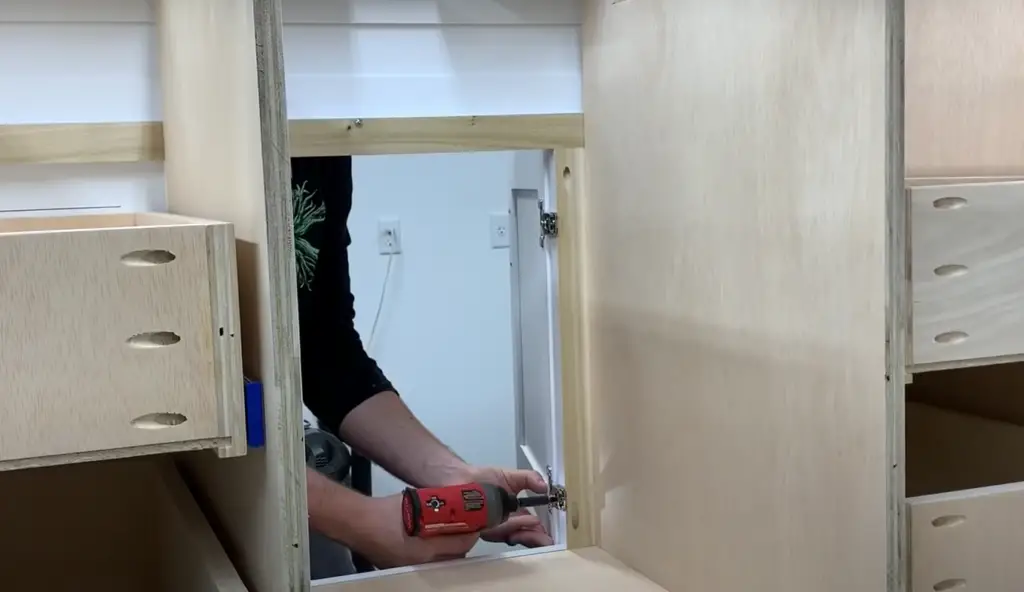
Cottage Style
If you’re looking to add a cozy cottage feel to your bathroom, then painted wood kitchen cabinets could be the solution. Painted wood is still water-resistant and looks great in small bathrooms. You can go for a classic white finish or opt for something more vibrant such as blue or green for an eye-catching look.
Finally, once you have decided on the style of kitchen cabinets that you want to use in your bathroom, make sure to measure out the space available before making any purchases. This will ensure that everything fits nicely and there is enough room for all of your items.
What are the Biggest Differences Between Kitchen Cabinets and Bathroom Vanities?
The biggest difference between kitchen cabinets and bathroom vanities is that the latter typically feature an integrated sink. This allows for a clean and seamless look in your bathroom with no interruption from the vanity’s countertop to the rim of the sink. Kitchen cabinets, on the other hand, are not designed with sinks and do not typically have enough space to accommodate one if you wanted to install one.
But beyond just this big difference, there are many others that make kitchen cabinets less suitable for use as a bathroom vanity than traditional bathroom vanities:
- Bathroom vanities tend to be much narrower than kitchen cabinets so they can easily fit into smaller bathrooms without taking up too much room;
- Most bathroom vanities are designed with a lower countertop height, making them more comfortable for people to stand in front of and use;
- Bathroom vanities are often designed with features like drawers, cubbies, and shelves that make it easier to store all your bathroom necessities;
- The finish is another important difference – kitchen cabinets typically have a wood finish while bathroom vanities come in an array of colors and finishes such as white, black, grey, or even metallic;
These differences are important considerations when deciding whether you should choose kitchen cabinets or bathroom vanities. It’s also important to keep in mind the style you want to achieve with your overall bathroom design – if you prefer a modern look then a traditional style bathroom vanity might not be the best choice. [4]

Ultimately, it’s important to weigh all these considerations before making a decision on whether you should use kitchen cabinets or bathroom vanities in your space. As long as you take the time to consider your options carefully then you should be able to make the right decision for your needs and achieve the look you desire.
Some Things to Consider
Additionally, keep ventilation in mind since improper ventilation can cause mold and mildew growth on any surface. If possible, create airflow by installing an exhaust fan near the kitchen cabinet space or leave enough clearance around the units so air can circulate freely.
FAQ
Can you turn kitchen cabinets into bathroom vanities?
Yes, in some cases you can turn kitchen cabinets into bathroom vanities. It is important to make sure that the cabinetry you are using is designed for use in a humid environment because of moisture levels in bathrooms. If your kitchen cabinetry is not suitable for use in the bathroom, you may want to consider purchasing new vanity cabinets specifically designed for bathroom use.
Can you use a kitchen sink base cabinet for the bathroom vanity?
Yes, you can use a kitchen sink base cabinet for the bathroom vanity. The key is to make sure the cabinet is water-resistant and properly sealed to ensure there are no leaks. If possible, look for cabinets that have been designed specifically for bathrooms, as these will typically be more durable and better suited for the job. Make sure you also account for space constraints in your bathroom when selecting a kitchen cabinet – some may not fit in tighter spaces due to their size or shape. [5]
Once you’ve found the right kitchen cabinet for your bathroom, it’s time to start installing it! This can involve some modifications (such as cutting out parts of the cabinet) so it’s best to call in an experienced carpenter or contractor if you’re unsure about doing it yourself. Keep in mind that installing a sink cabinet also requires plumbing, so you may want to call a plumber as well. When everything is properly installed and sealed, your new bathroom vanity should be ready to use!
Are bathroom cabinets the same size as kitchen cabinets?
No, bathroom cabinets are typically smaller than standard kitchen cabinets. Bathroom cabinets are designed to fit in tighter spaces and are usually between 12″ – 42″ in width and 18″ – 84″ in height. Kitchen cabinets tend to be larger, often ranging between 15″ – 48″ in width and 30″ – 96″ in height. Additionally, the depth of bathroom cabinets is generally shallower than that of kitchen cabinets because they don’t need as much storage space.
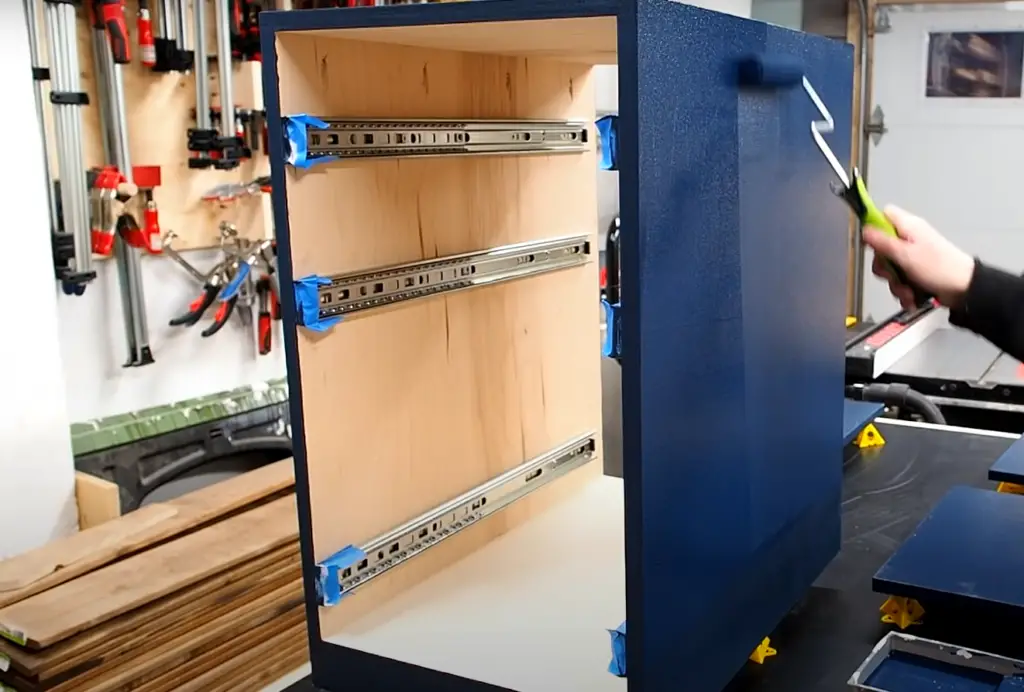
If you decide to use kitchen cabinets for your bathroom project, it is important that you measure your available space before purchasing any materials. You may need to make modifications to the cabinet design if it doesn’t fit perfectly into the area you have to work with. Additionally, be sure to consider the style of cabinets you choose. Kitchen cabinets are typically designed with a more utilitarian appearance while bathroom cabinets often have a sleek and stylish look. [6]
Are bathroom vanities and kitchen cabinets the same?
No, bathroom vanities and kitchen cabinets are not the same. While both types of cabinets are designed to provide storage space and serve as functional additions to your home, they have different features and design considerations.
In addition to their differences in form, materials used for bathroom vanities are usually different from those used in kitchen cabinets. Bathroom vanities may be constructed from moisture-resistant materials such as engineered wood, melamine, and laminate to make them more resistant to humidity and water. Kitchen cabinets typically use solid wood or plywood to provide a sturdier construction.
Finally, bathroom vanities come with additional features that you wouldn’t find on traditional kitchen cabinetry such as towel bars and window treatments. This makes them ideal for adding extra functionality and style to your bathroom without having to install separate fixtures.
Useful Video: Using a kitchen cabinet as a bathroom vanity
Conclusion
When it comes to whether you can use kitchen cabinets in a bathroom, the answer is yes — but with some caveats. Kitchen cabinets can be used in bathrooms provided they are installed correctly and sealed properly. This means installing waterproof sealant, using high-grade materials, and ensuring that all surfaces are moisture-resistant. However, there are other considerations to bear in mind such as the size of your bathroom and the type of cabinet material you choose. Ultimately, it’s best to consult a professional if you’re unsure about any aspect of the installation process or would like additional advice on which materials may be better suited for a bathroom environment.
Regardless of whether you decide to install kitchen cabinets in your bathroom or not, make sure you take the necessary steps to ensure that your bathroom is a safe and comfortable space. This includes installing proper ventilation systems and checking for any potential damp or mold issues. Additionally, keep in mind that if you do choose to use kitchen cabinets in your bathroom, it’s important to regularly clean them as well as sealants applied during installation.
References:
- https://nelsonkb.com/kitchen-cabinets-in-a-bathroom/
- https://www.nashuahomedesigncenter.com/blog/can-you-use-kitchen-cabinets-for-a-bathroom-vanity
- https://www.designlineworks.com/blog/cat-bathroom-and-kitchen-remo/should-kitchen-and-bath-cabinets-match/
- https://www.homeoutlet.com/blog/article/are-kitchen-and-bathroom-cabinets-same
- https://www.nashuahomedesigncenter.com/blog/can-you-use-kitchen-cabinets-for-a-bathroom-vanity
- https://www.homeoutlet.com/blog/article/are-kitchen-and-bathroom-cabinets-same






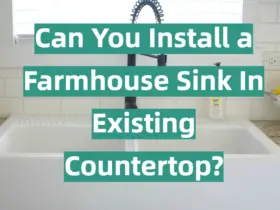



Leave a Reply